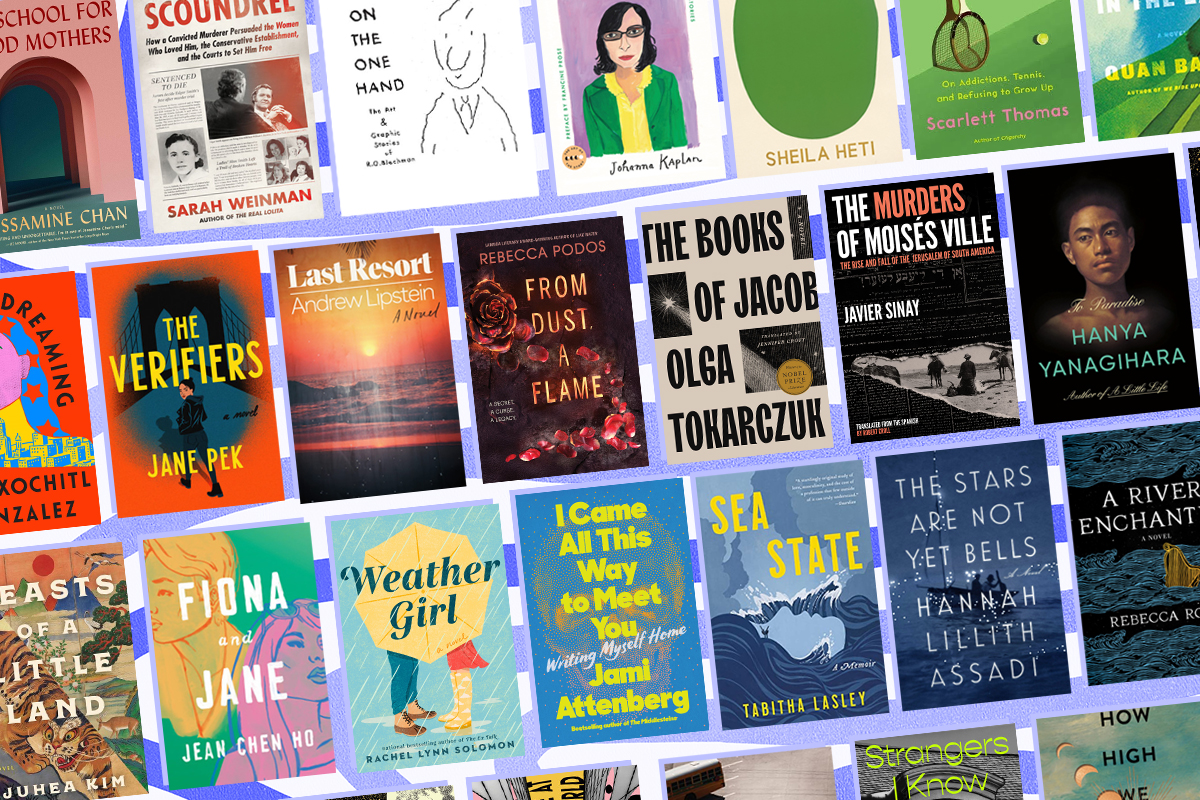The platonic ideal of winter reading, in my humble opinion, takes place during late afternoon after a day spent doing a winter activity (skiing, ice skating, sledding, walking outside as it lightly snows) when you are defrosting, sitting by a fire, drinking some hot chocolate and just feeling extremely cozy in your sweatpants and fuzzy socks. (Can you tell I have a winter birthday and grew up skiing in the northeast?) There’s simply no better feeling, or time, to dive into a really good book. And do I have good books for you to read this winter.
As always, this list is shoppable on Bookshop:
Happy winter reading, pals.
1. The Books of Jacob by Olga Tokarczuk (trans. Jennifer Croft) (February)
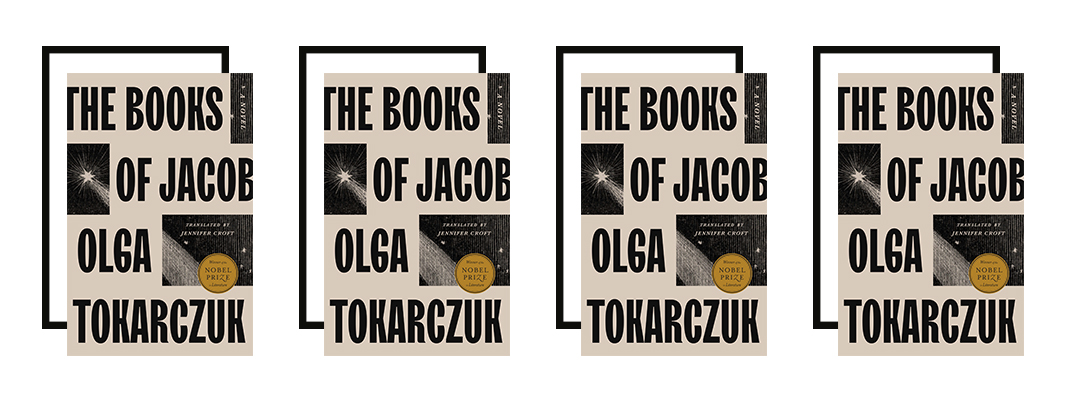
Polish writer Olga Tokarczuk won the Nobel Prize in Literature in 2018, awarded for “a narrative imagination that with encyclopedic passion represents the crossing of boundaries as a form of life.” Cited in her award was her historical novel “Ksiegi Jakubowe” (“The Books of Jacob”), published in Poland in 2014 and not translated into English… until now. “The Books of Jacob” is remarkable: It follows 18th-century Jewish mystic Jacob Frank (who really existed), who claimed to be the reincarnation of self-proclaimed messiah Shabbatai Zevi. Divided into seven books, “The Books of Jacob” is truly an epic historical novel — starting in a shtetl in 1752 and ending in Korolówka, in eastern Poland, during the Holocaust. The full title is “The Books of Jacob, or: A Fantastic Journey Across Seven Borders, Five Languages, and Three Major Religions, Not Counting the Minor Sects. Told by the Dead, Supplemented by the Author, Drawing from a Range of Books, and Aided by Imagination, the Which Being the Greatest Natural Gift of Any Person. That the Wise Might Have It for a Record, That My Compatriots Reflect, Laypersons Gain Some Understanding, and Melancholy Souls Obtain Some Slight Enjoyment.” If that appeals to you, you know who you are.
Read if you’re into: 900+ page books about Jewish mysticism. I am sure this is at least one of you. Get it here.
2. Sea State by Tabitha Lasley (December)
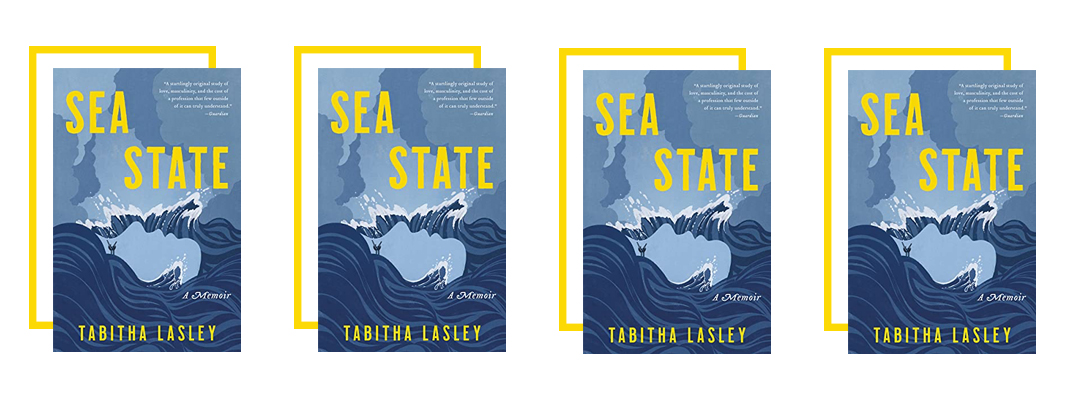
Journalist Tabitha Lasley quit her job in London and set out to Aberdeen, Scotland, with the intention to write a story about the men who work on oil rigs. Why? As she told her editor, “I want to see what men are like with no women around.” Her first interview subject is a married man named Caden with whom Tabitha quickly becomes intertwined — leading “Sea State” to be so much more than just a look at the lives of offshore workers. Part reportage and part memoir, Lasley pulls you into the world of oil rigs. I loved how The Guardian summed it up: “an investigation that is also a confession but reads a lot like a novel. It is a startlingly original study of love, masculinity and the cost of a profession that few outside of it can truly understand. The cost to Lasley herself is yet to be revealed.”
Read if you’re into: reported memoirs, worlds you probably don’t know. Get it here.
3. Weather Girl by Rachel Lynn Solomon (Jan)
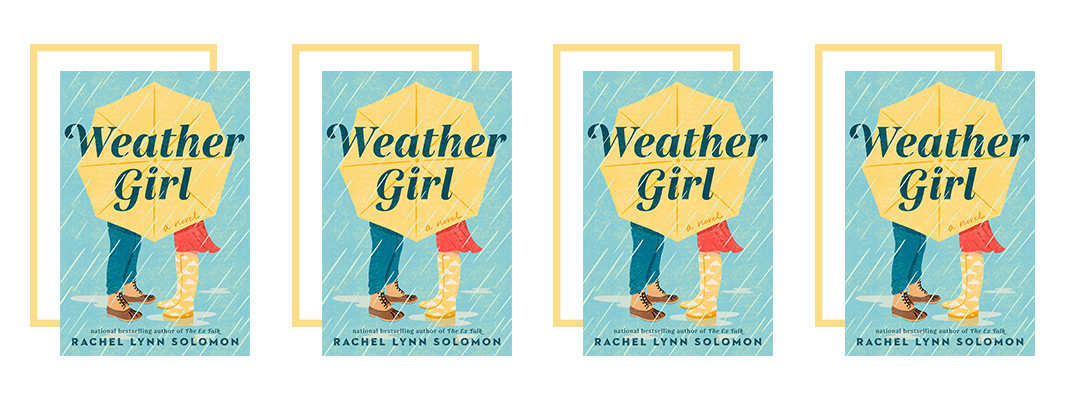
Jewish meteorologist Ari Abrams loves her job reporting the Seattle weather for the local news. However, her boss, weatherwoman Torrance Hale, is not as present as Ari wants — she’s stuck in a never-ending battle with her ex-husband Seth, the station’s news director. Ari links up with Jewish sports reporter Russell to try and get Torrance and Seth back together — they want to “Parent Trap” their bosses to make the atmosphere at the station better. Naturally, their meddling leads to a romance between the two reporters. But Ari is struggling with her own mental health — plus Russell has his own complicated family. Ari is a deeply relatable Jewish heroine, and Solomon expertly weaves Jewish culture and traditions into the plot. Jasmine Guillory, one of my all-time favorite romance authors, blurbed “Weather Girl,” writing, “That feeling you get when you curl up on the couch on a rainy Saturday with a great book in one hand and a spiked hot chocolate in the other: That’s the feeling you get when you read Weather Girl. This book is cozy, comforting, thought provoking, and it’ll make you feel warm from the inside out.” Solomon deftly handles mental health and family crises in the background of a blossoming, delightful romance between two Jewish reporters, and “Weather Girl” is a fabulously nuanced romance novel. There’s also a pivotal scene at a bat mitzvah that is guaranteed to make you feel all the feelings. Perfect for snowy (or rainy) winter days.
Read if you’re into: swoony, real Jewish romance!! Get it here.
4. On the One Hand / On the Other Hand by R. O. Blechman (Dec)
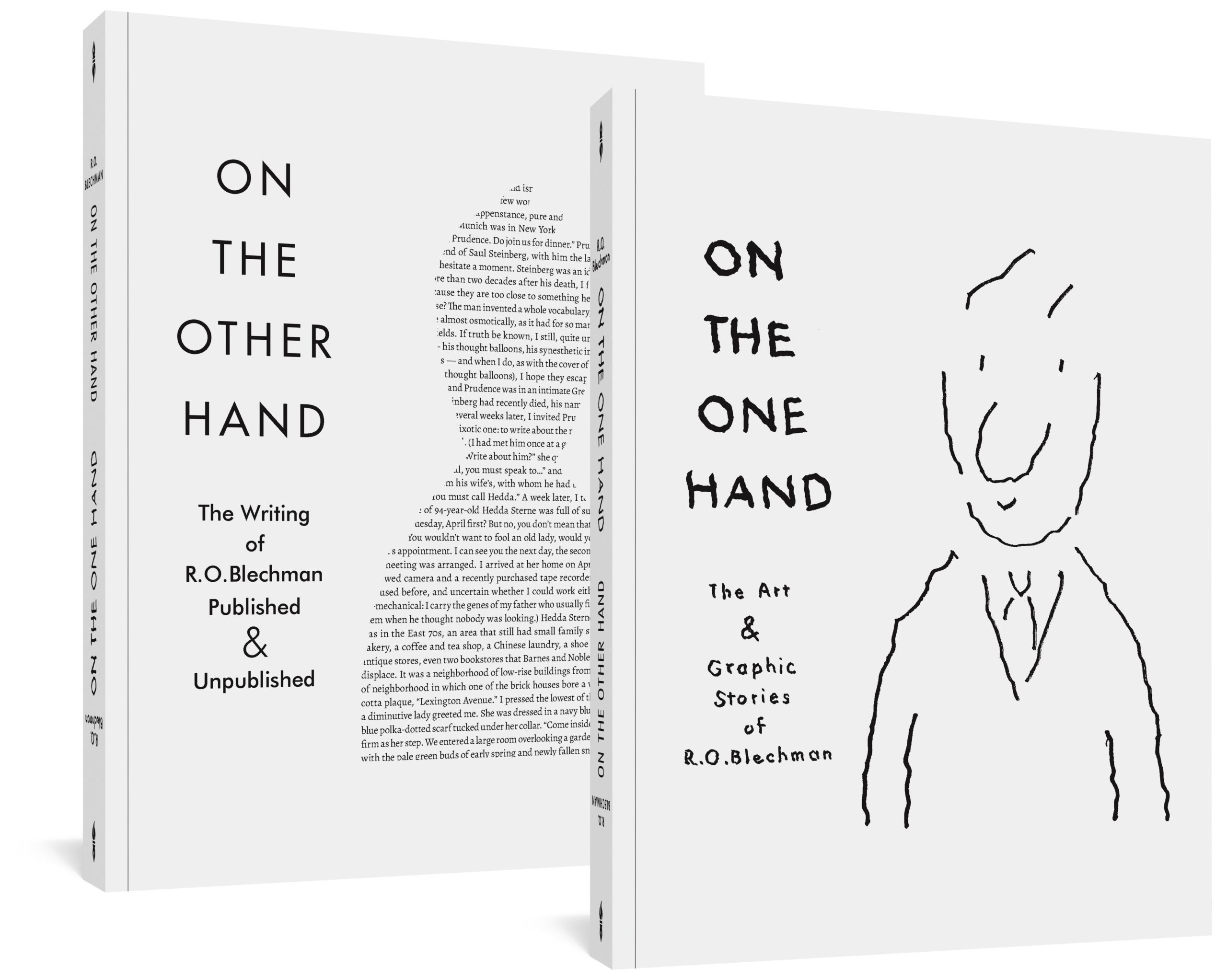
This gets its own graphic because R. O. Blechman’s art cannot be contained in my book preview template. Blechman, 91, is an animator, illustrator, cartoonist and graphic novelist. Born in Brooklyn, New York to a Jewish family in 1930, Blechman’s career has been long and fruitful. He’s drawn everything from covers for The New Yorker to a 1966 Christmas message for CBS — and this double-sided book collects his drawing and writing from over his 70-year career. “On One Hand” features artwork and cartoons and magazine covers, and “On the Other Hand” is a collection of essays which “offer his trenchant insights, both playful and profound, on the state of our culture today including his personal perspective on film, theater (“Well, let’s be fair to Franz Kafka. Can you blame a cockroach?”), literature, history, politics, social change, and his fellow cartoonists and illustrators.” My favorite essay, and perhaps most of note for Jewish readers, was “The Melting Pot,” which discusses growing up Jewish in New York and the impact of Jewishness on his work. Blechman writes, “Perhaps, in a profound way, my style of thinking may reflect my Jewish heritage. In a pure sense, creativity is a matter of expressing oneself uniquely, of leaving the herd in order to take the lonely, less trodden path. I think that being born ‘different,’ or perceiving oneself as being ‘different,’ may promote the individuating process that is at the heart of true creativity.” Not to be missed.
Read if you’re into: Jewish artists and writers. Get it here.
5. I Came All This Way to Meet You: Writing Myself Home by Jami Attenberg (Jan)
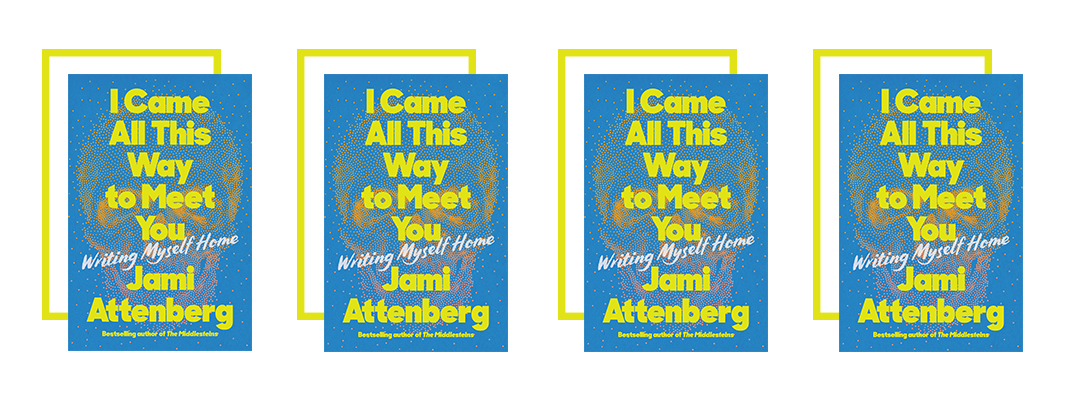
Jami Attenberg’s memoir “I Came All This Way to Meet You” is a look back at her life and writing. She travels from Brooklyn to New Orleans to Lithuania to Portugal, and her voice is clear and strong throughout. My favorite parts of the memoir were when Attenberg’s particularly Jewish humor shone through. For example, she writes of Marla, an older woman who managed her building in Brooklyn: “I gave her advance copies of all my books because she loved to read, and I appreciated a reader, and because I wanted her to like me, because I like it when older Jewish people like me, and also so things would get fixed, or at least so attempts would be made.” (Also can we talk about her incredible use of commas?!) Attenberg’s meditations on travel and finding one’s own sense of place are funny and smart, and there are so many pages I bookmarked to return to. “Our stories are all the same,” Attenberg writes, “It is just how you tell them that makes them worth hearing again.” And I am so grateful to hear her story.
Read if you’re into: Great memoirs, Jewish authors Get it here.
6. A River Enchanted by Rebecca Ross (February)
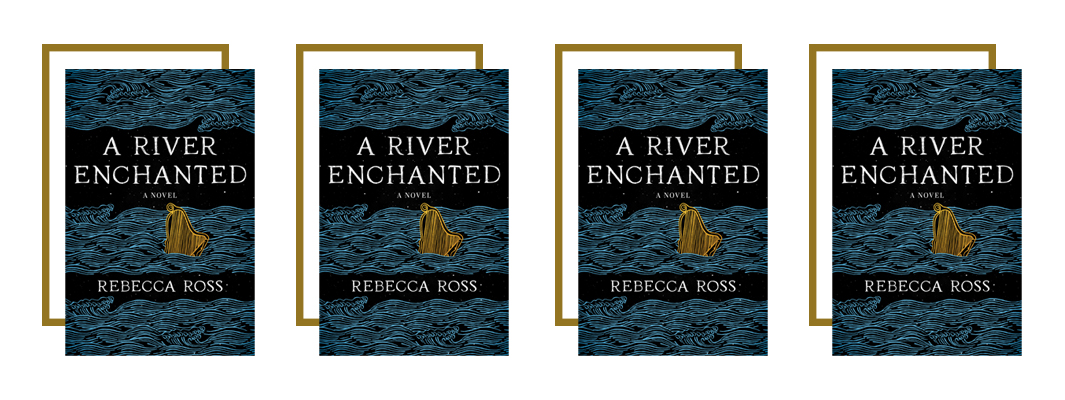
There’s something about wintertime that makes me want to find an epic fantasy with a map at the start and just curl up and not look up until I’m done. If you feel similarly: Look no further than “A River Enchanted” by Rebecca Ross, which is set in Cadence, a magical island off the coast of Scotland. The island is divided into the East and West, and the peoples who live on either side have been at war for centuries. Our protagonist is Jack Tamerlaine, who hasn’t returned to Cadence in ten years. He’s gone to the mainland to study music, but is summoned back one summer evening when young girls start disappearing. The Heiress of the East, Adaira, is the one who summoned him — and Jack’s childhood nemesis. They must put their past behind them to work together, and work magic, to find the girls. A page-turner dark fantasy mystery. Plus, a great enemies-to-lovers plot…. I simply can’t resist.
Read if you’re into: dark fantasy, magic, love stories. Get it here.
7. The School for Good Mothers by Jessamine Chan (Jan)
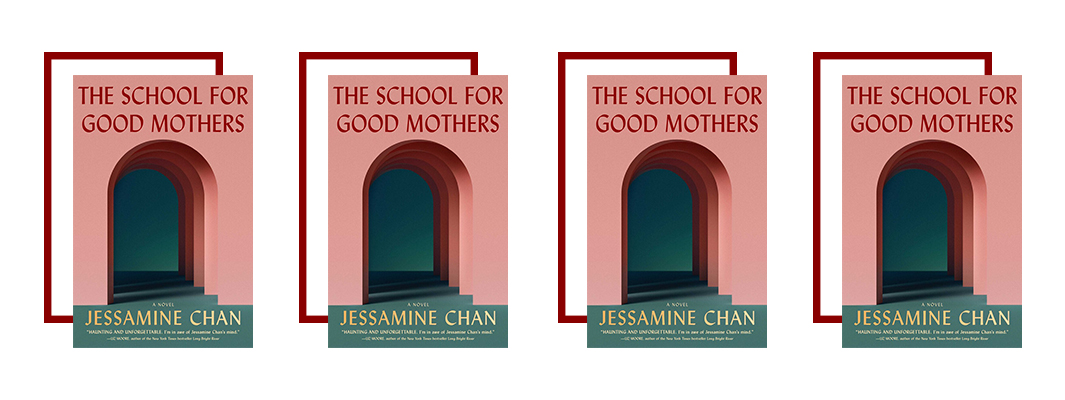
Frida Liu, a single mom, is struggling. Her estranged husband, Gust, is dating a wellness-obsessed young woman. Her daughter, Harriet, is not sleeping. And she’s falling behind at work. One day, in a moment of poor judgement, Frida leaves Harriet home alone. Soon, Harriet is taken away from her and Freida is at mercy of the legal system, one which sends her to a Big Brother-esque school to teach her to be a good mother. This book was so upsetting I had to put it down multiple times to calm myself time, but that is really just a testament to the brutal power of Jessamine Chan’s writing! As the blurb describes, “The School for Good Mothers” is “a searing page-turner that is also a transgressive novel of ideas about the perils of ‘perfect’ upper-middle class parenting; the violence enacted upon women by both the state and, at times, one another; the systems that separate families; and the boundlessness of love.” An incisive thriller on modern-day parenting.
Read if you’re into: Slightly dystopian books that feel really, really real. Get it here.
8. The Murders of Moisés Ville: The Rise and Fall of the Jerusalem of South America by Javier Sinay (trans. Robert Croll) (Feb)
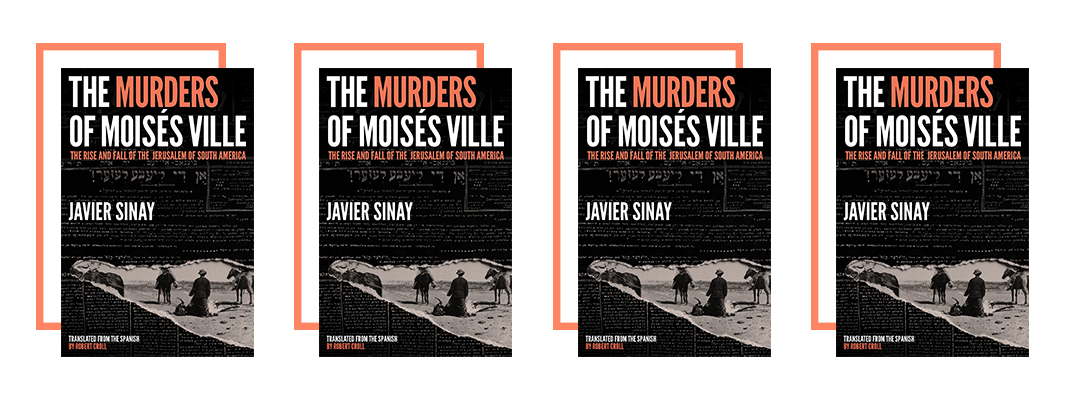
About a decade ago, Argentinian Jewish journalist Javier Sinay discovered a story his great-grandfather wrote in 1947. Titled “The First Fatal Victims in Moisés Ville,” Mijl Hacohen Sinay’s story detailed the murders of 22 Jews in 17 years. Sinay (the younger, our author) was immediately taken in by the story and set out to learn as much as he could. What results is part family history, part Jewish history, part archival mystery as Sinay dives into Moisés Ville (called Moishevishe by residents), a town founded in Argentina by Jews fleeing pogroms in Eastern Europe. He struggles to find copies of the newspaper his great-grandfather founded, sending him on a journey through Jewish archives in Argentina, the U.S., Israel and elsewhere. But throughout, Sinay takes his readers by the hand and guides them through the crimes, the history of colonization and the Jews who remain. You can read “The Crimes of Moisés Ville,” an excerpt, in Tablet. “The Murders of Moisés Ville” is a must-read for all those interested in Jewish history — especially histories that are not often told.
Read if you’re into: Jewish history, genealogy, Latin American Jews, true crime. Get it here.
9. The Verifiers by Jane Pek (Feb)
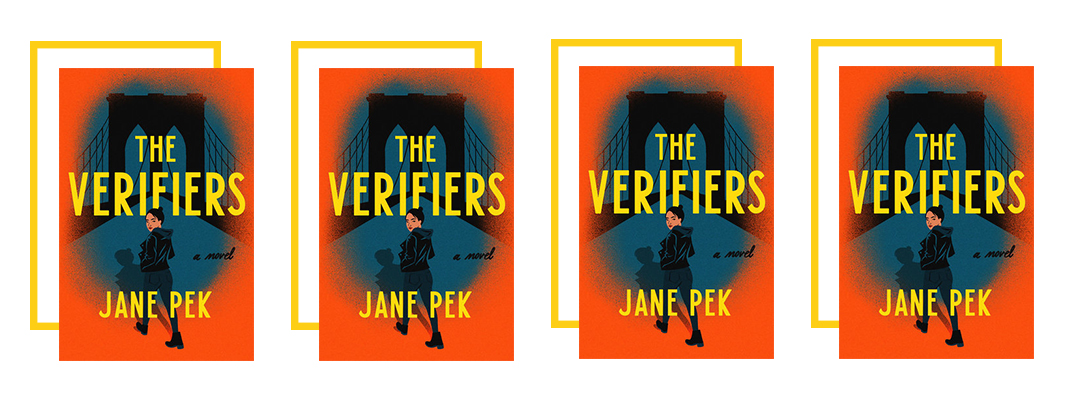
Claudia Lin is a recent graduate who quit her job at a financial company to go work for Veracity, a mysterious detective agency that helps online daters “verify” their matches. One day, a client with an unusual request shows up at Veracity’s offices — and soon after, she disappears. Claudia is told to drop the case, but can’t let go. She takes inspiration from her literary hero, Inspector Yuan, and her love of detective novels. Meanwhile, she’s keeping her job — and her sexuality — secret from her family. What results is a twisty and smart mystery about online dating algorithms layered with a poignant tale about second-generation Asian American identity.
Read if you’re into: Mystery, queer protagonists, Asian American stories. Get it here.
10. The Stars Are Not Yet Bells by Hannah Lillith Assadi (Jan)
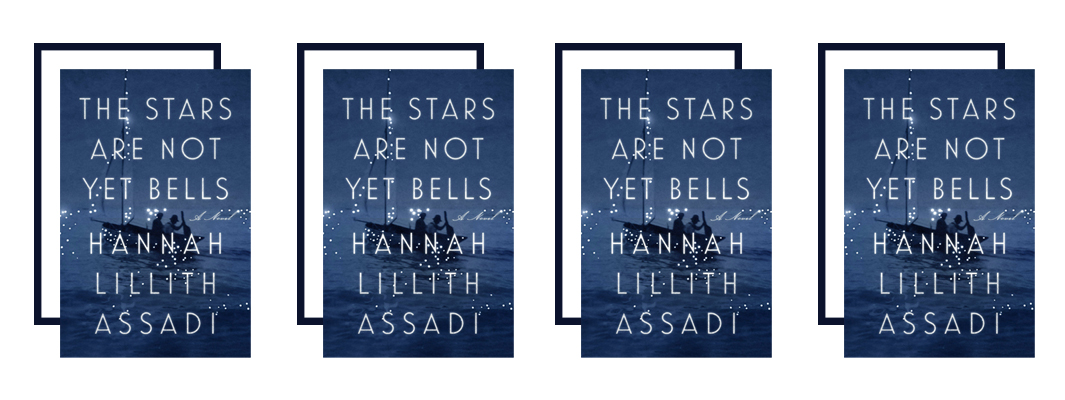
Jewish and Palestinian author Hannah Lillith Assadi’s second novel, “The Stars are Not Yet Bells,” is the tale of Elle, an elderly woman who is losing her memory. During World War II, Elle and her jeweler husband Simon leave New York City for Lyra, an island off the coast of Savannah, Georgia, where a diamond-like blue jewel can be found. There, Elle brings Gabriel, her old lover who she pretends is her cousin, who disappears shortly after his arrival on Lyra. Elle’s narration and recollection is hazy due to her fading memory, but at its core, the beauty of the love triangle story is that it unfolds tensely yet lyrically. “The Stars Are Not Yet Bells” is inspired by the true story of Assadi’s grandparents’ marriage. As Kirkus writes, “Potent streaks of longing and melancholy run through the novel: All of its characters want what they can’t have, and Assadi returns again and again to the lasting pain of broken hopes and dreams.” A remarkable story of love and memory.
Read if you’re into: Stories that jump between past and present, love triangles. Get it here.
11. Moon Witch, Spider King by Marlon James

You know how I was just talking about how winter is the perfect time for epic fantasies? Once again, look no further than the sequel to Marlon James’ revelatory and epic “Black Leopard, Red Wolf” (2019). (And if you haven’t read that one yet, run, don’t walk.) “Moon Witch, Spider King,” is the second in the planned trilogy, and tells the story of Sogolon the Moon Witch, one of the primary antagonists in the first novel. Sogolon, a 177-year-old-witch, tells her own perspective on the events of the first novel and introduces a new plot: a feud between her and Aesi, a chancellor to the king. (The titular “Spider King.”) The world that Marlon James creates is like nothing I’ve ever read in fiction — drawing from African history and mythology, and just a remarkable imagination — and I can’t wait to dive into this one.
Read if you’re into: Truly epic fantasies. Get it here.
12. Fiona and Jane by Jean Chen Ho (Jan)
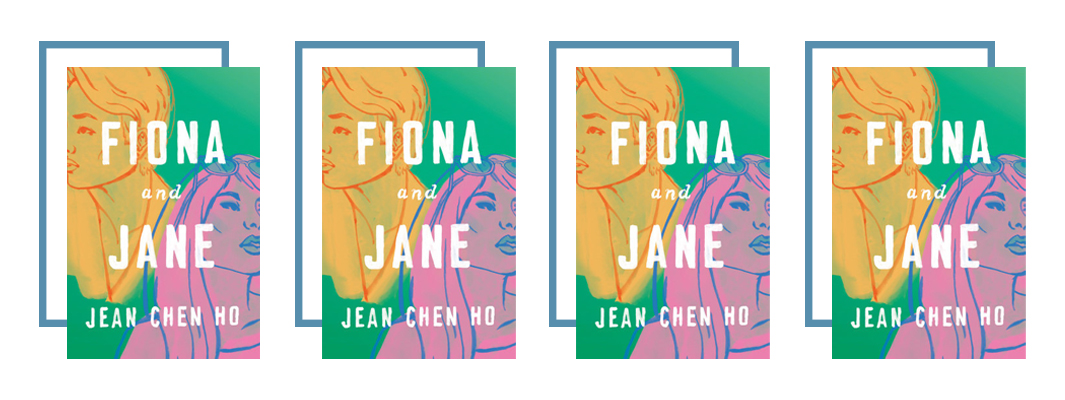
“Fiona and Jane” is the story of (guess!) Fiona and Jane, AKA Fiona Lin and Jane Shen, who have been best friends since second grade. Jean Chen Ho’s wondrous novel follows the pair into adulthood — alternating between their perspectives — and how the two orbit each other, going in and out of one another’s lives. It’s a linked story collection, starting with 18-year-old Jane visiting her father in Taiwan and ending with a New Year’s Eve party nearly two decades later. I loved how the stories were told from alternating perspectives and how we got a fuller portrait of both women through each new tale. I love Jade Chang’s blurb: “Jean Chen Ho has created an iconic pair of friends who are messy and sexy and so thoroughly alive that I’m pretty sure we once snuck into a club together. Joyously specific and true.” (Can I just say “joyously specific” is my new favorite way to describe something?!) Essentially: read Fiona & Jane for the characters of Fiona & Jane. (Or, as Jane tried to say, Jane & Fiona.)
Read if you’re into: Female friendship!! Get it here.
13. From Dust, A Flame by Rebecca Podos (Feb)
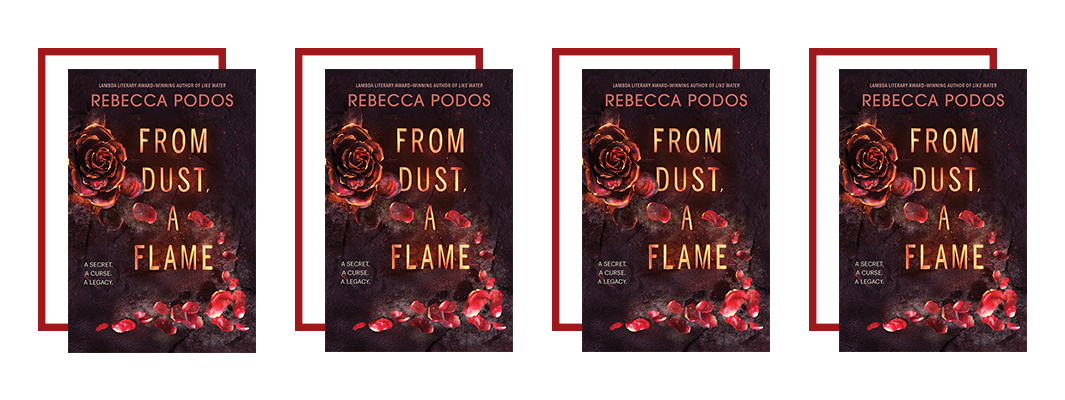
At age 17, Hannah wakes up, looks in the mirror, and her eyes are no longer her eyes — they’re golden eyes with snake-like pupils staring back at her. Her mom leaves Hannah and her brother, Gabe, behind as she sets off for a cure. But when she doesn’t return, the Jewish siblings realize they have to take matters into their own hands. As the book blurb reads, “What they discover is a family they never knew and a history more tragic and fantastical than Hannah could have dreamed — one that stretches back to her grandmother’s childhood in Prague under the Nazi occupation, and beyond, into the realm of Jewish mysticism and legend. As the past comes crashing into the present, Hannah must hurry to unearth their family’s secrets in order to break the curse and save the people she loves most, as well as herself.” Jewish fantasy author Aden Polydoros had recommended this to me back when I interviewed him, and it absolutely delivers. Once again: Winter is literally the perfect time to read a fantasy novel!! And a JEWISH fantasy novel?! We couldn’t ask for anything better.
Read if you’re into: Contemporary Jewish fantasy! Fantasy rooted in Jewish mysticism!! Like, OMG!! Get it here.
14. To Paradise by Hanya Yanagihara (Jan)
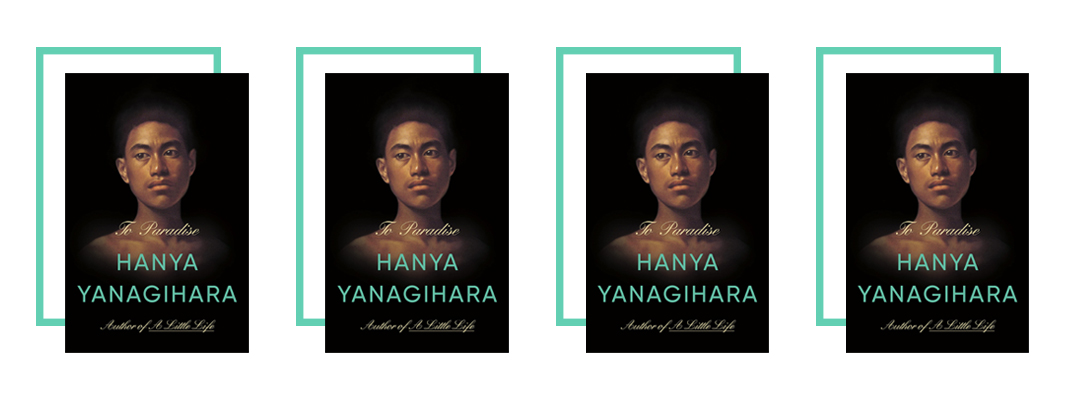
Look, if there’s a new Hanya Yanagihara novel, you bet I am going to drop everything to go read it. Yanagihara — author of “A Little Life” and “The People in the Trees” — turns her attentions to an alternative American history. Set in 1893, 1993, and 2093, Yanagihara tells three distinct, yet interlinked tales. They all circle around a house in Greenwich Village, and the main characters are almost all gay men. Character names also repeat. Book I, “Washington Square,” is the 1893 story, about how the “fragile young scion of a distinguished family resists betrothal to a worthy suitor, drawn to a charming music teacher of no means” (all men); Book II, “Lipo-wao-nahele,” the 1993 story, is set in the AIDS epidemic in Manhattan, where a “young Hawaiian man lives with his much older, wealthier partner, hiding his troubled childhood and the fate of his father”; and in Book III, “Zone Eight,” the 2093 story tells of the granddaughter of a famed scientist trying to figure out the disappearance of her husband in a plague-ridden world. I don’t want to write much more, because this book is really best read going into it with just the bare bones outline of what’s to come. An incredible new novel from a masterful storyteller.
Read if you’re into: Hanya!!! Also, alternative history, dystopian fiction, and queer stories. Get it here.
15. Blood in the Garden: The Flagrant History of the 1990s New York Knicks by Chris Herring (Jan)
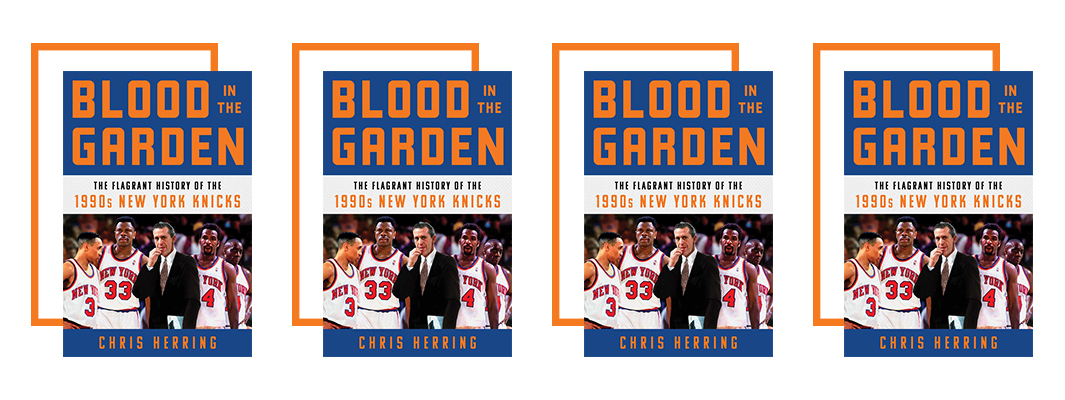
Look, no seasonal books preview of mine would be complete without at least one good sports story. So when I saw there was a book coming that covered the definitive history of the 1990s New York Knicks? Yes, please! Author Chris Herring, who covers basketball for Sports Illustrated, dives into the rise and fall of the iconic New York City franchise. As he writes in the intro, “Rest assured: no punches will be pulled. Which is just how those Knicks would like it.” Herring’s “Blood in the Garden” is remarkable — he spoke with over 200 people (including players, coaches, trainers, family members, and more) to put together a “warts-and-all” portrait of the ’90s Knicks. The actual Jewish angle to this story is that the GM of the Knicks from 1989 to 1999 was Ernie Grunfeld, a Jewish refugee and son of Holocaust survivors.
Read if you’re into: The New York Knicks!! Side note: Are the Knicks a Jewish sports thing or do I just think so because my dad, who is Jewish, is a big Knicks fan? Either way if you’re a Jewish sports fan, you’ll probably enjoy this. Get it here.
16. Lost & Found by Kathryn Schulz (Jan)
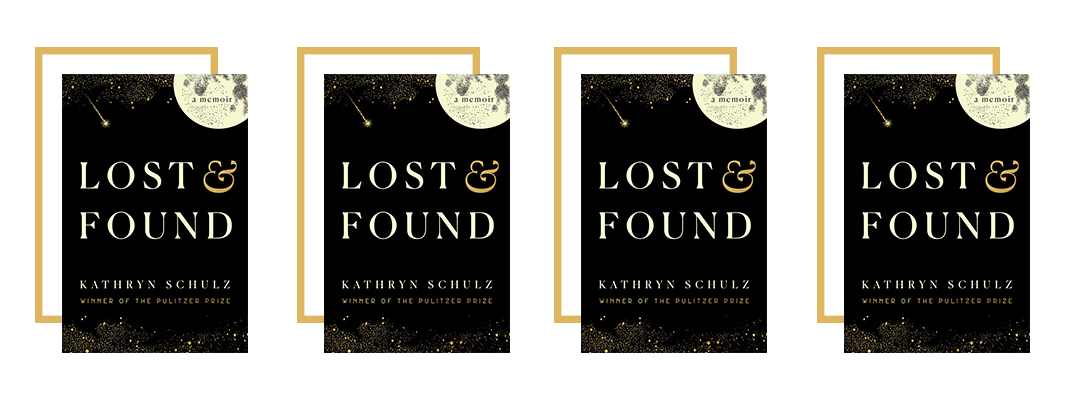
Pulitzer Prize winner Kathryn Schulz’s memoir is the story of losing her father — and of how, in the year before he died, she met the woman who would become her wife. Her lawyer dad was a Jewish refugee who came to America when he was 11, and her partner grew up the daughter of farmers in the Lutheran church. Schulz dives into these questions of faith and heritage alongside grief and new love in her beautiful memoir. As author Helen Macdonald wrote of the memoir, “An extraordinary gift of a book, a tender, searching meditation on love and loss and what it means to be human. I wept at it, laughed with it, was entirely fascinated by it. I emerged feeling a little as if the world around me had been made anew.” While the Jewish author’s memoir is very much the story of her own grief and love, it also serves as a lens through which readers can reflect on their own families. While you’re here, read her essay “When Things Go Missing.” If you liked that, read this book.
Read if you’re into: Stories of love, grief & families. Get it here.
17. How High We Go in the Dark by Sequoia Nagamatsu (Jan)
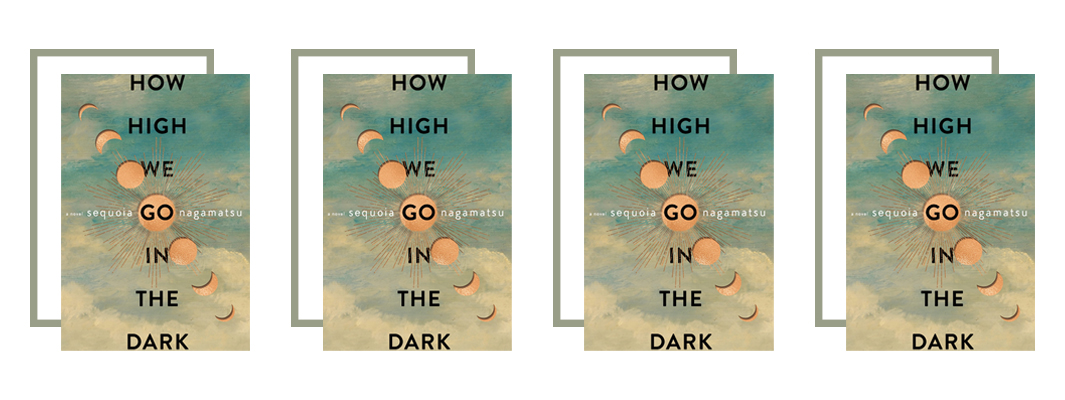
Japanese American writer Sequoia Nagamatsu’s debut novel is set in the future where a deadly Arctic plague is unleashed on the world. Yes, this a dystopian plague novel — but it’s still an escape from our present reality, and absolutely worth your time. As Nagamatsu writes of selling his novel in 2020, “Would people still want to read a story about a plague? I’ve come to realize that ‘How High We Go in the Dark’ isn’t really about a virus at all; it’s about memory and love and resilience. It’s a book that reaches for a beating heart somewhere deep in the cosmos.” Through interweaving stories, characters struggle with how to find light in the darkness of the seeming end of the world. Nagamatsu’s imagination is boundless, taking readers from hotels for the dead to interstellar starships. Fans of sci-fi and post-apocalyptic stories, look no further.
Read if you’re into: Science fiction, post-apocalyptic stories. Get it here.
18. Pure Color by Sheila Heti (Feb)
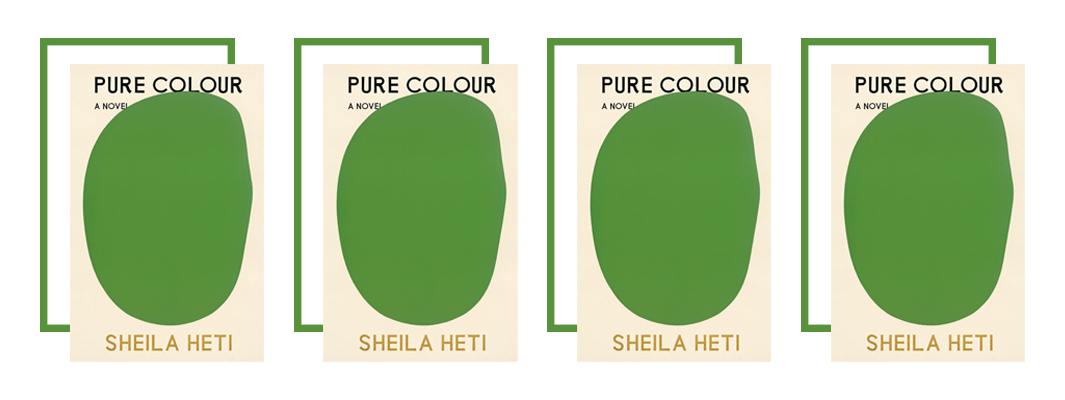
Jewish author Sheila Heti’s newest work is a philosophical tale of sorts. We learn that there are three kinds of people: birds, fish, and bears. Birds are ambitious, fish are social creatures, and bears are singularly focused on their love. Mira is a bird; her crush, Annie, is a fish, and her father is a bear. Here’s the basic plot (if we can even call it plot): We meet Mira, who leaves home to study. She meets Annie, who changes her life. When Mira’s father dies, his spirit enters her, and they become a leaf on a tree — but after an unknown amount of time, Mira wants to return to human life, crying out for Annie’s help. A bit confusing at times, but a strange, powerful book.
“The book has an organic feeling to it, and I think this final cover captures its true shape,” Heti says of the cover. “The green also echoes with the leaf, which is an important image in the book, and makes sense with many other images in the book. I look at the cover often. I feel like I am falling into it, when I look at it.”
Read if you’re into: Sheila Heti, essentially. Get it here.
19. Strangers I Know by Claudia Durastanti (trans. Elizabeth Harris) (Jan)
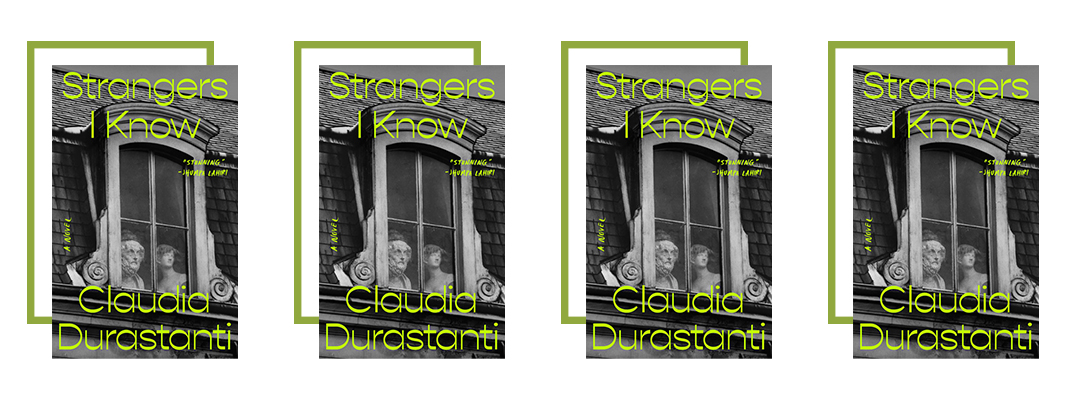
“Strangers I Know” is Italian writer Claudia Durastani’s English-language debut, following the communication issues of one Italian American family. Our unnamed 30-something protagonist is the daughter of two deaf parents who divorced when she was young. They never taught her (or her brother) sign language, which results in an inability to communicate. Ocean Vuong blurbed the novel: “Durastanti casts the universal drama of the family as the sieve through which the self — woman, artist, daughter — is filtered and known.” “Strangers I Know” is based on Durastani’s own life as the daughter of deaf parents. As she writes in the acknowledgments, “This book is dedicated to a girl and a boy who lived through their deafness with recklessness. While I was trying to be brave or to be good, they were teaching me how to be free. I hope I was able to mirror their recklessness at least in fiction and to finally become their ‘true’ daughter in the realm of the imagination.”
Read if you’re into: Translated fiction, family drama, bildungsromans. Get it here.
20. Olga Dies Dreaming by Xochitl Gonzalez (Jan)
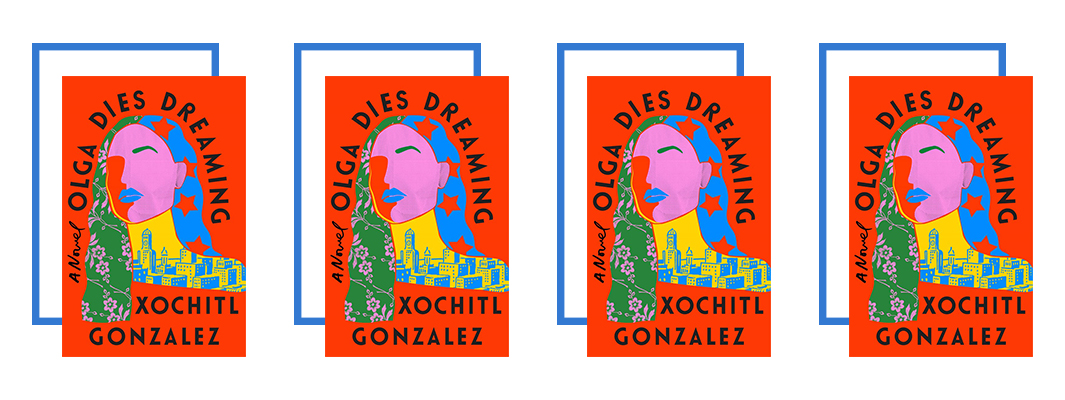
“The telltale sign that you are at the wedding of a rich person is the napkins.” And so beings Xochil Gonzalez’s revelatory debut about Olga, a Nuyorican wedding planner in New York City. Olga and her brother Pietro are making moves — Olga plans weddings for NYC’s rich and famous, while Pietro is a popular congressman for their Brooklyn neighborhood. But beneath their success is a troubled family; their mother, Blanca, a Young Lord (think Puerto Rican Black Panthers), left the two of them when they were little. And against the backdrop of Hurricane Maria — the devastating category 5 hurricane that hit Puerto Rico — this family history bubbles up. There’s so much to love about “Olga Dies Dreaming.” It’s a funny, heartfelt tale of family, diaspora, gentrification, and, as Jennine Capó Crucet blurbed, “how the personal is always deeply political.” Plus, the book is already being adapted into a TV show starring Aubrey Plaza (as Olga), Ramón Rodríguez (as Pietro), and Wanda De Jesús (as Blanca). It will be a one-hour drama on Hulu, writer Gonzalez is writing the pilot, and if you’re the type of person who needs to read the book before watching the show: What are you waiting for!?
Read if you’re into: Really, really good novels. I have no other words — just a great story. Get it here.
21. American Shtetl: The Making of Kiryas Joel, a Hasidic Village in Upstate New York by Nomi M. Stolzenberg and David N. Myers (Jan)
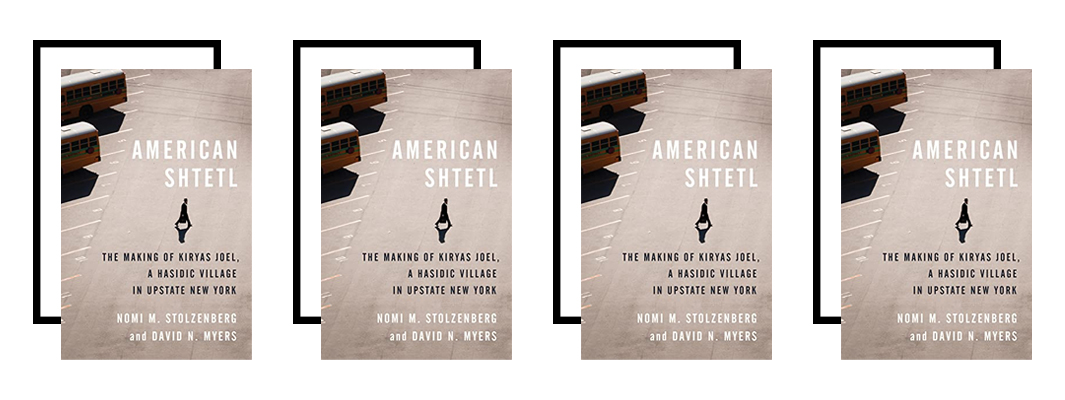
Kiryas Joel is a town in Orange County, New York whose residents are Yiddish-speaking Hasidic Jews of the Samtar Hasidic sect. Jewish studies scholars Nomi M. Stolzenberg and David N. Myers trace the establishment and rise of Kiryas Joel. Named for Samtar Hasidic founder Rabbi Joel Teitelbaum, Kiryas Joel was established in the mid-1970s and set out to consciously replicate the way of life of the shtetl in pre-World War II America. As they write, “Rabbi Teitelbaum had the intention of creating a shtetl from his first years in America. Shortly after settling in Williamsburg, Teitelbaum set his sights on establishing a community outside of New York City. He instructed his aides to locate land where a shtetl could be established at a sufficient remove from the teeming urban environment and its allures.” From its formal incorporation in 1977 to the present day, Kiryas Joel has grown rapidly. Yet, Myers and Stolzenberg argue, Kiryas Joel is a distinctly American shtetl, rooted in the landscape of this country. It’s a tale of religion, race, real estate, identity politics and so much more. An important read for anyone looking to understand American Hasidic Jewishness.
Read if you’re into: Jewish studies, American Hasidism, Jewish history. Get it here.
22. The Maid by Nita Prose (Jan)
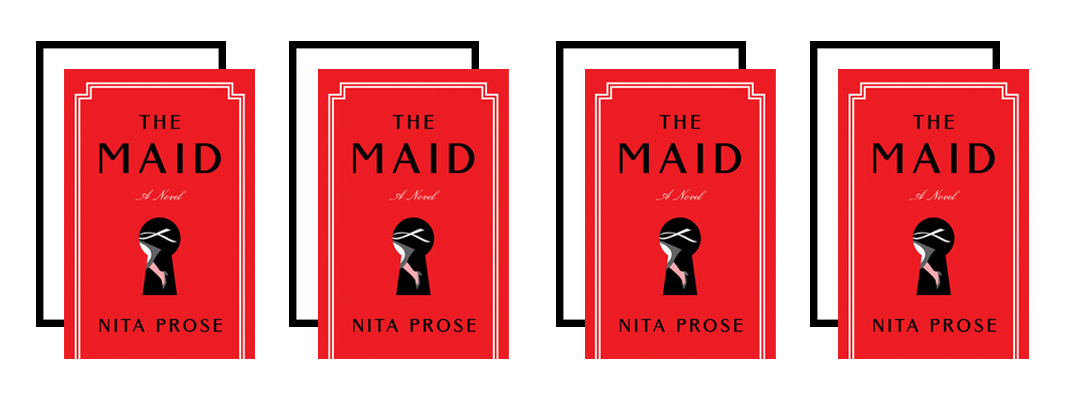
I can’t resist a good whodunit. And “The Maid,” Nita Prose’s debut, really delivers. Molly Gray is our hero, a neurodivergent 25-year-old who works as a maid at the Regency Grand, a luxury hotel. She’s still grieving the loss of her grandmother, her only family, but finds solace and takes pride in her work. Until one day, one of the guests in one of her rooms is murdered — and Molly is the one to find him. The police are put off by her matter-of-factness, and she quickly becomes the lead suspect, but Molly is determined to find out who the real murderer really was. As the book blurb explains, “A Clue-like, locked-room mystery and a heartwarming journey of the spirit, ‘The Maid’ explores what it means to be the same as everyone else and yet entirely different — and reveals that all mysteries can be solved through connection to the human heart.” We just love to see (read) it.
Read if you’re into: Mysteries at hotels — the best type of mystery novel. Get it here.
23. Last Resort by Andrew Lipstein (Jan)
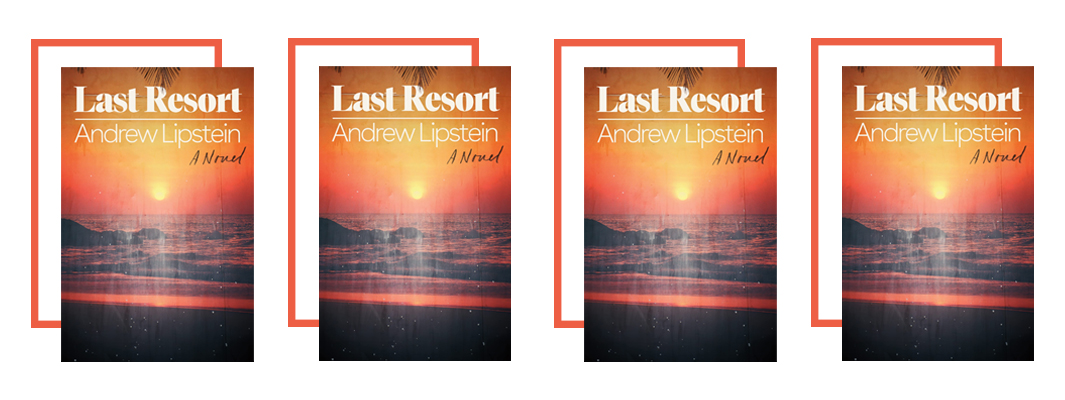
We all remember the Bad Art Friend, right? Well, Jewish author Andrew Lipstein must’ve predicted the future, because his novel “Last Resort” is basically bad art friend on steroids (and better). Caleb Horowitz is 27, and he’s just landed the literary agent of his dreams, who is excited to sell his manuscript. Caleb, however, has a secret: the story of the novel came from a college rival, Avi Dietsch, who told him the story one drunken night. When Avi reads the manuscript, he sees it as complete theft. Who owns the story? Whose name gets to be on the book? As Lipstein tweeted when the whole Twitterverse was talking about the New York Times story, “now would be an… interesting time to pre-order my book, about… a writer who steals someone else’s story…” He added, “If only there were an upcoming debut exploring the ethics of turning real people into characters, and what’s behind the instinct… !!!!!!” A complicated story of fame, ethics, and whose story belongs to whom.
Read if you’re into: This is obvious, right? Bad Art Friend, baby! Get it here.
24. Be Here to Love Me at the End of the World by Sasha Fletcher (Feb)
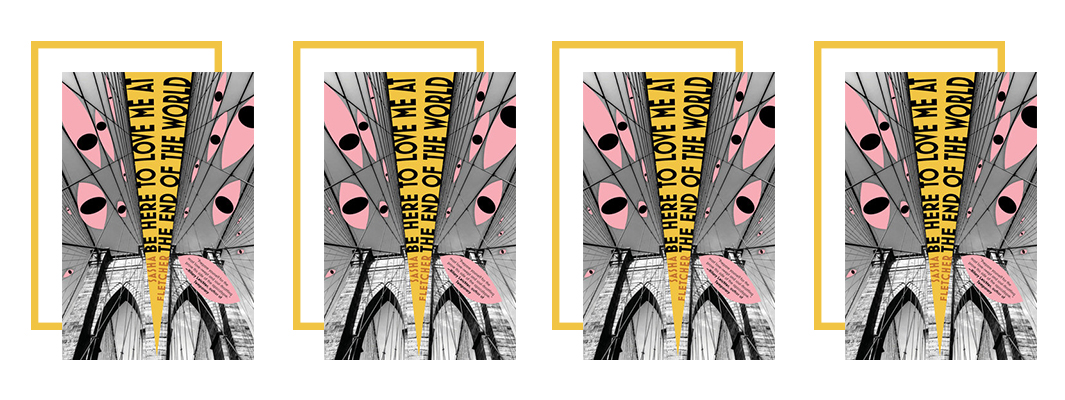
Sasha Fletcher’s debut is set in end times. Specifically, our end times. Here’s how “Be Here to Love Me at the End of the World,” a very dark but very funny novel, begins: “It’s Brooklyn. It’s winter. It’s so cold outside you could execute billionaires in the street and it hasn’t even snowed. In the aisles of the supermarket, the landlords gather…. Later, tanks will roll into the streets. The sky will look like you’ve never seen it before. It’ll look like a movie. It’ll change your life. Then there’ll be a history lesson, followed by a reasonably good dinner, but after that, it’s the end of the world.” Set against the end of the world is the lover story of Eleanor and Sam, who live in Brooklyn in wintertime. It’s a gem of a novel, one I don’t want to spoil for you, but one I know you’ll like. Plus, relevant for us here at Alma: Sasha is part of the Jewish community, and his novel undeniably captures a recognizable slice of Brooklyn.
Read if you’re into: Absurdist fiction, novels set in the future that don’t feel really that too far from the future. Get it here.
25. Defenestrate by Renee Branum (Jan)
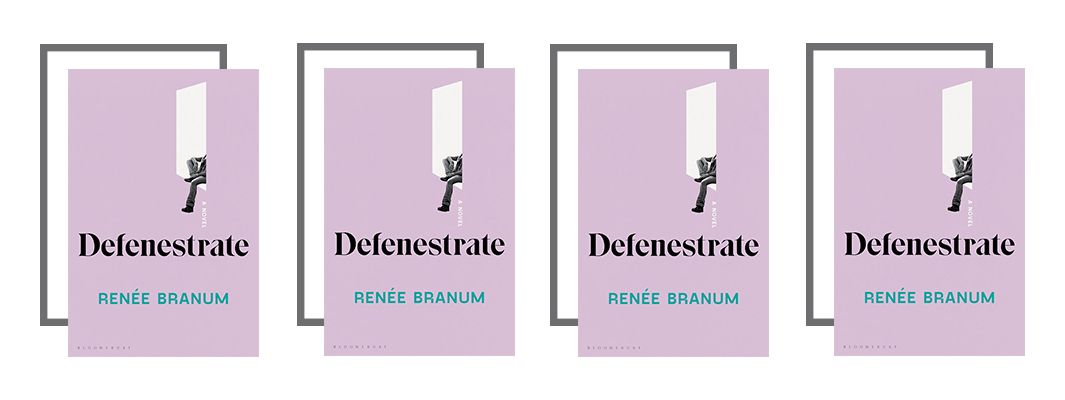
To defenestrate is to throw someone out of a window. Marta and her twin, Nick, have grown up being told by their mother that their family is cursed to fall — literally, doomed to various types of falls. “There’s a superstition in our family about falling — a kind of tight-lipped joke that’s no longer a joke because it’s happened too often over the years: cousins leaning against railings that wouldn’t hold their weight, uncles losing their footing while cleaning leaf debris from slimy gutters, aunts toppling from ladders, their spines folding up on themselves like coat hangers. Something in our bodies wants to fall…” As Marta and Nick’s relationship with their mother splinters, the twins move to Prague (a city of defenestration) as they confront family secrets and history. I also just love how many real-life falls (from falling in love to the pratfalls of childhood idols) are included.
Read if you’re into: Family secrets, Prague, what we inherit. Get it here.
26. Beasts of a Little Land by Juhea Kim (Dec)
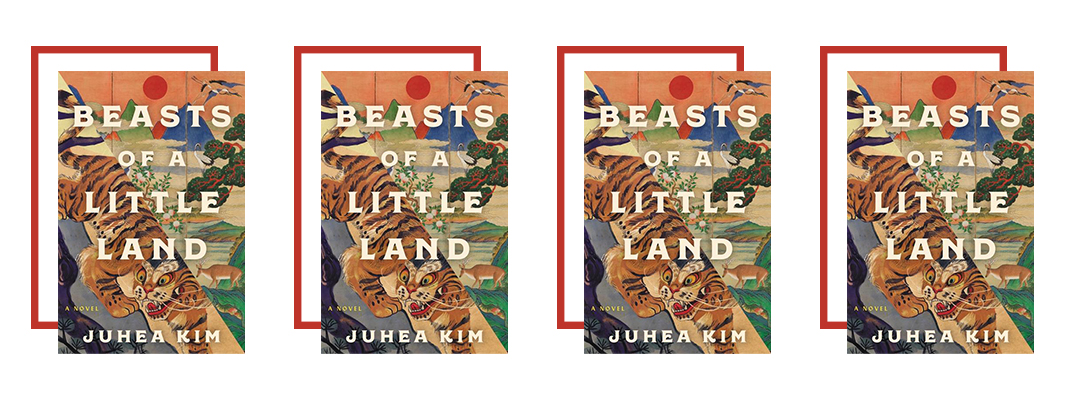
“Beasts of a Little Land” is an epic historical fiction that tells of the Japanese occupation of Korea. Our story begins in 1917, when three plots happen: A local Korean hunter in the mountains saves a young Japanese soldier from a tiger, a young Korean woman is raped by a Japanese officer, and a Seoul street urchin joins the Communist Party. Our main character is Jade, the eldest daughter of a poor family, who is being trained as a courtesan. Here’s the blurb that will absolutely make you want to read this (we love a great blurb): “From the perfumed chambers of a courtesan school in Pyongyang to the glamorous cafes of a modernizing Seoul and the boreal forests of Manchuria, where battles rage, Juhea Kim’s unforgettable characters forge their own destinies as they wager their nation’s. Immersive and elegant, ‘Beasts of a Little Land’ unveils a world where friends become enemies, enemies become saviors, heroes are persecuted, and beasts take many shapes.” Sign me up.
Read if you’re into: Historical fiction, Korea. Get it here.
27. Scoundrel: How a Convicted Murderer Persuaded the Women Who Loved Him, the Conservative Establishment and the Courts to Set Him Free by Sarah Weinman (Feb)
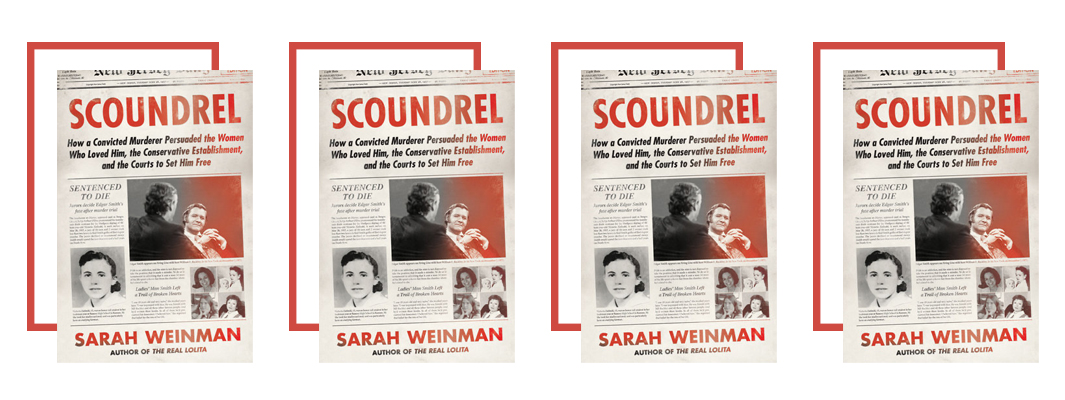
Sarah Weinman is a fantastic Jewish crime writer. The author of “The Real Lolita: The Kidnapping of Sally Horner and the Novel that Scandalized the World” (read our convo here!) and the editor of “Unspeakable Acts: True Tales of Crime, Murder, Deceit and Obsession,” Weinman is back with the tale of Edgar Smith. In the 1960s, Smith was in prison and sentenced to death for the murder of teenager Victoria Zielinski. He strikes up a correspondence with William F. Buckley, the founder of National Review, who starts to advocate for his release — and eventually succeeds. But Smith would go on to attempt murder again. So Weinman asks: How and why was this man able to manipulate his way out of prison? “‘Scoundrel’ shows, with clear eyes and sympathy for all those who entered Smith’s orbit, how and why he was able to manipulate, obfuscate, and make a mockery of both well-meaning people and the American criminal justice system. It tells a forgotten part of American history at the nexus of justice, prison reform, and civil rights, and exposes how one man’s ill-conceived plan to set another man free came at the great expense of Edgar Smith’s victims.” If you are into murder and history, this is for you.
Read if you’re into: True crime, murder, history. Get it here.
28. When I’m Gone, Look for Me in the East by Quan Barry (Feb)
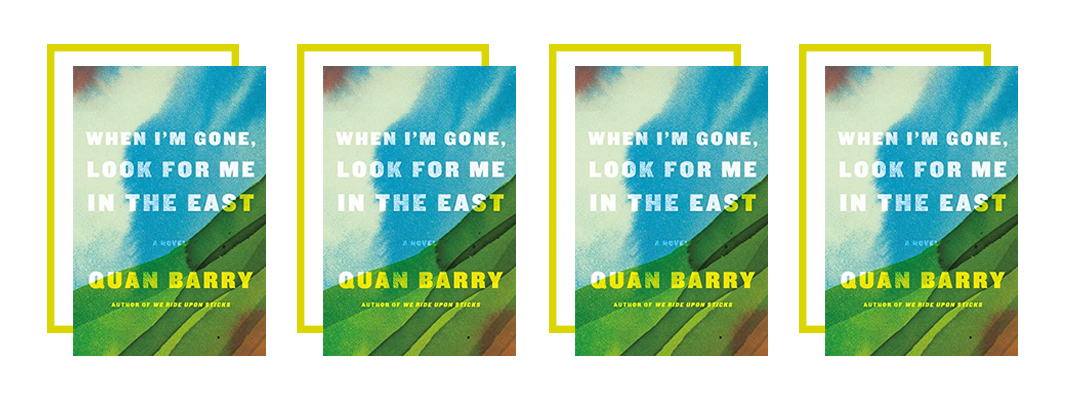
A young monk, Chuluun, is tasked with finding the reincarnation of a great lama, or teacher, who is somewhere in Mongolia. Chuluun seeks out his identical twin, Mun, who used to be a monk but has since renounced the monastic lifestyle. This is the third novel by author Quan Barry, who was born in Saigon and raised in Massachusetts, and I loved how it dove into questions of faith and family in new and inventive ways. Her last book, “We Ride Upon Sticks,” was a delightful story of field hockey and witchiness in the 80s, and “When I’m Gone, Look for Me In the East” couldn’t be more different (in the best way possible). The story grapples with a main question of faith: “Are our lives our own, or do we belong to something larger?” A deeply resonant question for people of all faith backgrounds.
Read if you’re into: Brotherhood, faith, Buddhism. Get it here.
29. 41 Love: On Addictions, Tennis, and Refusing to Grow Up by Scarlett Thomas (Jan)
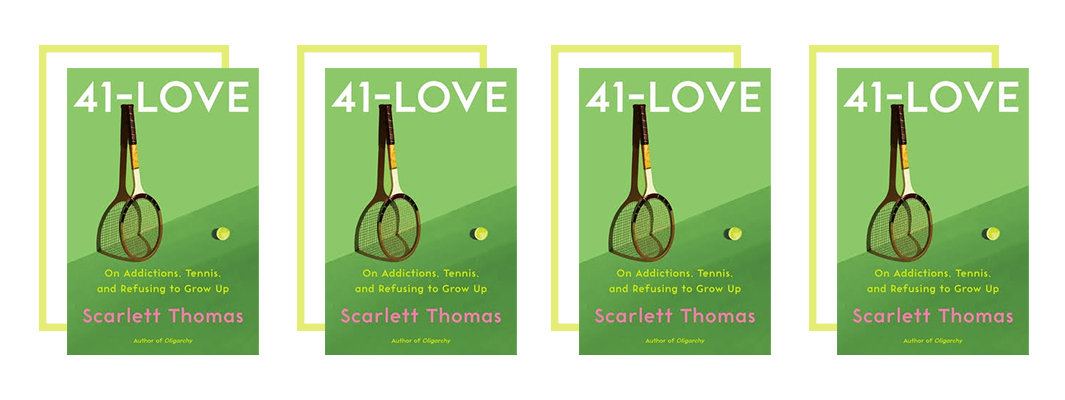
British writer Scarlett Thomas turns 41, and her life, which felt together, begins to fall apart — her dog dies, two of her dads are diagnosed with cancer and another dies of an overdose, and nothing seems to be going right. So she turns back to tennis, a sport she loved as a child. “41-Love” is about her journey into tennis (“love” is a score of zero in tennis), beginning with a tennis lesson for her 41st birthday. As a longtime fan of tennis and good writing, I felt like Thomas wrote this memoir just for me. Thomas feels like she needs a win, so she sets her mind on winning Seniors’ Wimbledon (senior, here, is “over-40,” which I know is absurd, as does Thomas). There’s lively writing about tennis, but also about competitiveness and emotional toughness, and finding oneself later in life.
Read if you’re into: Memoirs, tennis, 40-something crises, and a winding path to growing up. Get it here.
30. Loss of Memory Is Only Temporary: Stories by Johanna Kaplan (Feb)
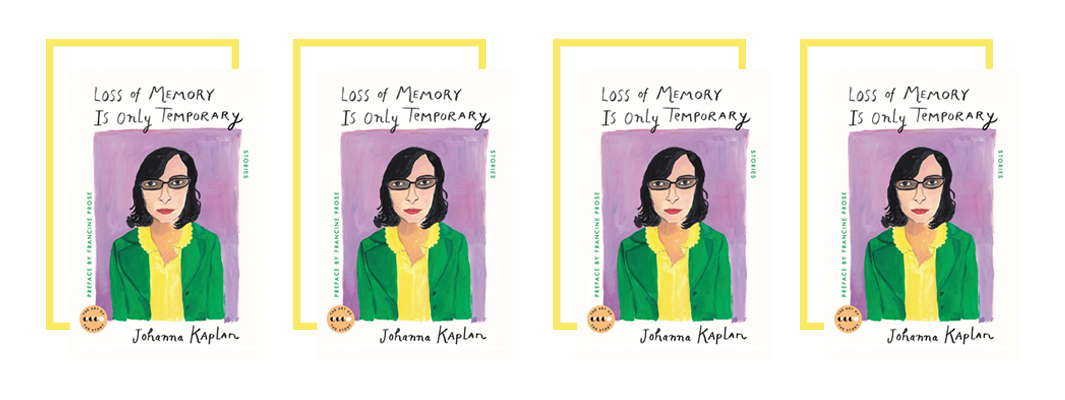
Last but certainly not least is a collection by Johanna Kaplan. Many of these stories by Kaplan, a Jewish author, were first published in the 60s and 70s. There are new and old stories in “Loss of Memory Is Only Temporary,” but all circle around Jewish New York in the time after World War II. My favorite was one of two new stories, “Tales of My Great-Grandfathers,” which features our protagonist running into a woman she went to high school with, which leads her to reflect on her family and her great-grandfathers, and on what it means to come from a storytelling family. Kaplan’s “Other People’s Lives,” a short story collection published in 1976, was a National Book Award finalist. As Francine Prose writes in the introduction, Kaplan’s stories “describe the all-too-common (perhaps universal) discovery that the world doesn’t warmly embrace the kind of girl who sees more than the people around her would prefer her to notice.” A warm, funny, Jewish collection of stories featuring bold and nuanced Jewish women.
Read if you’re into: Jewish stories, Jewish authors, Jewish New York…. This is for you. Get it here.
